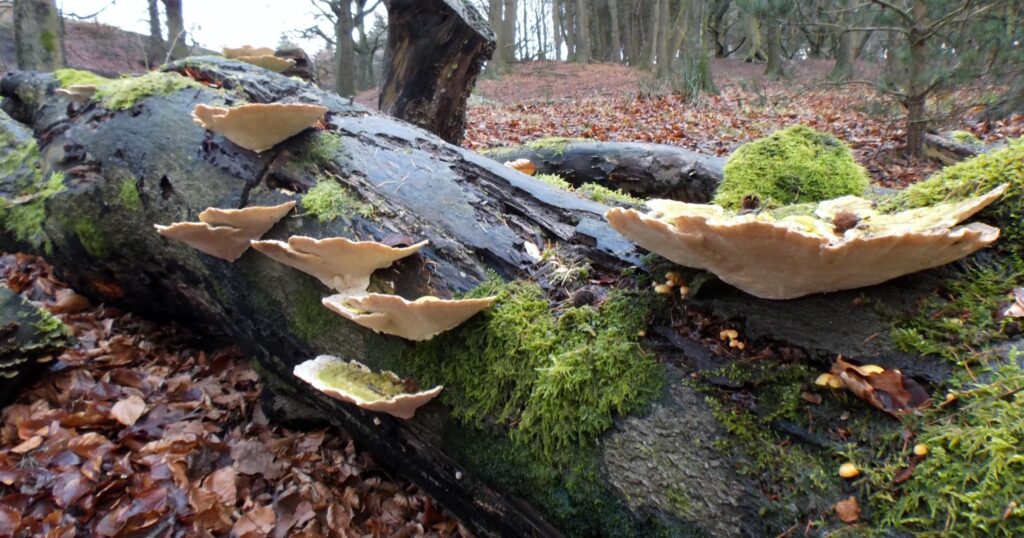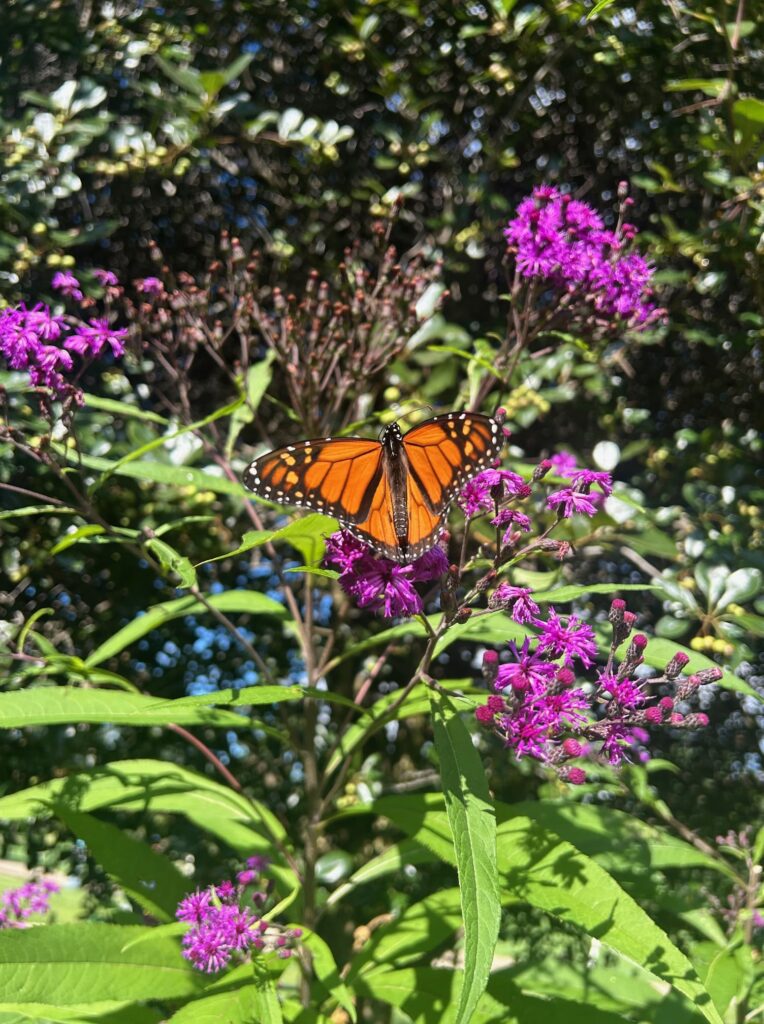I had heard of M Krishnan as one of India’s most renowned naturalists; he was also a wildlife photographer par excellence and a conservationist. I had also heard that he did not suffer fools. It was therefore with some trepidation that I went to meet the gentleman, who then in 1990, was in his late seventies. I wanted to quiz him about the wildlife of Chennai for a teachers’ handbook I was working on for the Indian National Trust for Art and Cultural Heritage (INTACH). Krishnan entertained me for a short while with stories of the erstwhile Madras, covered with shrub and teeming with jackal and blackbuck. After about an hour, though, he said he would be happier to write the piece himself, and gave me, a week later, a perfect typed out article on ‘the wildlife of Madras city’.
The term ‘wildlife’ connotes the entire uncultivated flora and fauna of any region. The two concepts of flora and fauna are so closely interlinked and interdependent that it is impossible to dissociate them in any consideration of the wildlife of an area without rendering such a general consideration futile. However, specific parts of either of these components can be written about without doing violence to the concept of the whole: so, we can consider the ‘Pteridophytes of Tamil Nadu’ or ‘The Raptors of Rajasthan’. This note will be, in the main, not even about the fauna of Madras city, but only its mammals (naturally, in a city and excluding its varied humanity, extremely limited) and avifauna, with a bare mention of some reptiles. Nothing can be said here about the teeming marine life of this coastal environment: I am a vegetarian.
However, even in such a narrowly circumscribed note, one cannot ignore the main factors providing the environmental motives bearing on the plants and animals of a place. These main factors may be listed as the climate of a tract, its geomorphology and edaphology (i.e., the lie of the land and the nature of its soil), its vegetation (wild and cultivated) and its wild animals, and last but by no means least its humanity. Brief discussions of all these factors follow, but it is possible, even at this stage to cut short the argument and state its conclusion. In Madras city, it has been a long-drawn engagement between Nature and Man, and Nature has lost in the final rounds: that is, within the past 50 years to which I have been a witness.
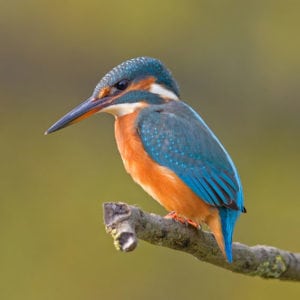
1. Climate, Geomorphology and Edaphologyup to 42°C and in December the night temperature comes down to 17°C—in other words, neither the heat nor the cold is extreme, sufficiently extreme to have a marked influence on wildlife. The humidity is generally high: it is seldom desiccating even in summer. Madras gets both monsoons. The southwest sets in about July and ends by October. The northeast arrives, usually about mid-November, and by January it has departed. High winds and even authentic storms are periodic rather than characteristic during the northeast monsoon. The sea breeze, dutifully noted in newspapers during summer, has little or no bearing on the wildlife of the place.
Madras is low and its terrain fairly level. The land is gently undulant and not given to abrupt depressions and elevations. During the monsoons, parts of Madras get inundated and the low-lying parts partially submerged. Because today there are hardly any vacant plots of land within the tightly built-up city, regular water spreads do not form. Water bodies existed in the city even till the middle of this century: for instance, what is Madras 28 today would be flooded during the rains and a number of water-birds and shorebirds (many of the latter migratory) could be seen at these marshy spreads. Even now, on the outskirts of the city, for example at Velacherry, such pools, puddles and shallow water spreads may be seen late in the year. The acute water shortage that is such a vital feature of the city, is now due entirely to the monstrous increase in the city’s human population and the subsequent staggeringly increased demand for freshwater. If one can imagine the conditions still prevailing in the flat countryside around Madras, for example in parts of the Chingleput, where pools, puddles and small shallow water spreads form with the first rains, the same conditions as earlier this century can again be realised in the city.
Madras has the second-best beach in the world: a long, broad, level stretch of fine sand extending from the Andhra border on its north right up to Mamallapuram on the south. Nowhere along this impressive length is it rocky, and nowhere does it form dunes or degenerate into a marsh as the eastern coastline of India does much farther south in Tamil Nadu, and to the north of the state towards Orissa. There are no major estuaries in and around the city: the Adyar and the Cooum sneak inconspicuously into the sea. To the east of the beach, there are no offshore islands—only the vast, imponderable ocean. To its west is the old city of Madras, long celebrated for its ancient Hindu shrines and only less ancient Portuguese, British and Islamic edifices and shrines.
The soil is not specifically sandy, except on the seashore: inside the city and on its west it is loamy or clayey, and not too permeable. However, in many places, it may be saline.
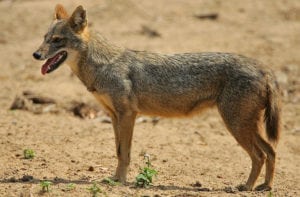
2. The vegetation
The natural vegetation is neither lush nor low-crowned, dry and hardbitten (as it is in coastal tracts farther south, as in Point Calimere). Palmyras, though mainly planted, also occur in straggling lines and small clumps, and the wild date (Phoenix sylvestris) is found (growing wholly wild) here and there, especially in the southern reaches of the city where there are still stands of trees. Other native trees worth mentioning are the wood-apple (Feronia limonia), Clausena dentate, the neem, Aegle marmelos in places, Pithecolobium dulce (naturalised), Acacia species, Samanea saman (planted and run wild), Avicennia species and Cerbera odollam (specific name reverted recently) at the Adyar estuary and the latter also along the Buckingham canal, the ‘punnai’ (Calophyllum inophyllum) and the Portia (Thespesia populnea), mainly planted, near the beach, the ‘uthia-maram’ (Lannea coromandelica), and among the lesser trees Zizyphus mauritiana and Z. xylopyrus, Capparis species (probably stylosa), Atlantia monophylla, Ochna squarrosa, Morinda tinctoria and Toddalia asiatica. Madras was specially notable for its great banyan trees, mainly planted along some roads (like what was Edward Elliot road and is now Dr Radhakrishnan road in Madras 4) – only recently, in the past 4 or 5 decades, has an irresistible combination of sudden storms and the Corporation of Madras bent on widening the roads, almost exterminated these grand trees. This should be mentioned as the fruiting banyan attracts a horde of birds.
Among the wild shrubs may be mentioned the following: Capparis species (probably roxburghii), Flacourita indica, Zizyphus canoplia, Rhynchosia minima (almost a climbing herb), Dichrostachys cinerea and species of Carissa.
Farther down the coast, brakes of screwpine and Spinifex littoralis (Ravanan-meesai) are common. In the city, however, the previously common main sandbinders, species of Launea and the goat’s-foot creeper, Ipomea pes-caprae, even these are rare now.
Note that the above account, which is only an indicative and not even a typical list, has omitted hundreds of trees, shrubs and herbs native to the city, either by intention or by inadvertence. Any location of the size of the city, even in a crowded metropolis, will hold several hundred plants, commonly found in it.

3. Introductions
3.1. Ornamental exotics
Until only 5 decades ago, Madras was very much one of the main garden cities of the country, and right from about 200 years ago has held a number of enthusiastic horticulturists. These brought in many exotics from tropical America and elsewhere. Among these, large trees still surviving in the city are the ‘nagalingam’ (Courouptia guianensis —the cannonball tree) from South America, the African baobab (Adansonia digitata), and also from Africa Kigelia ethiopica, much planted along highways leading into and out of the city. Another exotic planted in Madras gardens which has escaped outside its confines is the yellow oleander, Cascabela thevetia, the poisonous drupes of which are fatal to men and cattle but eaten with impunity by some birds (mainly the Koel) and some rodents.
These garden plants from distant lands, including many herbs and shrubs, have not affected the native flora or fauna in any way.
3.2. Unintended exotic introductions
Unintentionally introduced species have established themselves not only in and around Madras but also in most parts of India. Typical of these are Tridax procumbens, Tribulus terrestis (specific name now changed to lanuginosis) and the deleterious weed, Croton bonplandianum —all these came in long ago, and like lantana, made a conquest of India. A more recent exotic invader of the city and its suburbs (and also of the rest of the country) is the ubiquitous and pestilent mesquite, Prosopsis juliflora, hardy, acquisitive and not easily eradicated. The iodine-rich ‘lilac terror’, (the water hyacinth) has made no inroads worth the mention within the city, with all ponds reclaimed and converted into buildings. The prickly pear which posed serious problems in the early decades of this century has been eradicated to rarity, and another cactus, Cereus peruviana, has now established itself as hedge plant, as at Raj Bhavan in Guindy.
The most notable vegetative feature of the city is that north Madras is bare and thinly covered, whereas the south and west of the capital are comparatively better wooded. This has a historic background. Madras was one of the two cities where the East India Company first established itself and acquired power, and it was in the northern part of the town (as it was then) that the offices of administration, industry and commerce developed and the land was built up into row upon row of houses, warehouses and marts. The harbour then was not where it is now: the ships were anchored at Pulicat lake, the farthest northern part of old Madras. Even the Government House was not where it is today, as Raj Bhavan in Guindy, but near Rajaji Hall in Mount Road. Adyar and Guindy and near around were still not urbanised and retained an almost rustic complexion. That is why, in spite of the way Guindy has been developed as the centre of industry and technological studies, it is in Adyar (around the Theosophical Society) and Guindy national park that one must now look for the best evidence of what the flora of the city was like originally.
4. The Fauna
4.1. The Mammals
Fifty years ago the sunset chorus of jackals could be heard in places on the periphery of the city, and there was a Madras Hunt Club, “compleat” with imported foxhounds and a Master of the Hounds, which hunted the jack on horseback on the outskirts of Madras. Jackals could be seen even in the larger compounds of the bungalows in Mylapore (towards Alwarpet) furtively scrounging around late in the evening. The black-naped hare, the common mongoose and the palm civet could also be seen in such places, well within the city. Today over most of Madras the only animals that can be seen are palm squirrels, rats, bandicoots (where there are godowns holding food grain) and mice. Blackbuck, which roamed the scrub around Guindy and Velacherry, are still there, and it is only there that one can still occasionally glimpse a hare, a mongoose or a jackal: the palm civet is still there in places, but being nocturnal, is seldom seen. The pangolin has been seen on the periphery of the city but is quite rare.
Note: Chital were not part of the mammalian fauna of Madras, even when the city was comparatively wild. They were brought in to provide a decorative touch to Government House, when it was in Mount Road, and kept in a paddock. When the Governor’s residence was shifted to Guindy, the chital too went along with his retinue, and there, finding far greater freedom, have overrun the place to the detriment of the native blackbuck. Chital are among the very few wild mammals of the country that have the fecundity and remarkable adaptability to thrive even in an uncongenial setting—it is no wonder they have made themselves at home in Guindy—introduced into the wholly alien forests of the Andamans, they made a rapid conquest of the islands.
Blackbuck in the south do not attain bodily and horn development, as they do in the northwest. The population at Guindy and around is, however, authentically native: other coastal haunts of this antelope are there in Orissa, even in Tamil Nadu (Point Calimere). The bucks at Guindy seem on the decline.
4.2. The Avifauna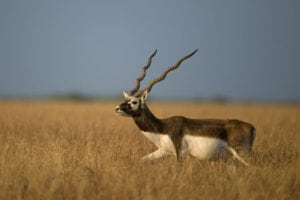
‘Eha’ in Bombay, Finn in Calcutta and Douglas Dewar in Madras were the first to write about Indian birds in a popular-scientific way, and they wrote about the avifauna of these principal cities. Birds are much less man-shy and location tied than mammals, and where there is scrub or woodland or marshland, scrub, woodland and water birds will be found. With the drastic decline in the groves and open scrub and ponds and similar waters in the city, there has been a directly proportional decline in the bird life of Madras, but many of the birds listed by Dewar are still to be seen here and there, mainly in south Madras. A reliable list of these birds has been prepared by competent observers and is available with the Madras Naturalists Society, and should be consulted for a detailed account. Here, only a cursory list roughly on a habitat basis is given.
5. Water-birds and Shorebirds
Little grebe and White-breasted Waterhen where there are ponds still. Night herons still nest in trees by themselves in a small colony in places and feed along the Buckingham canal and other waters. Among the resident water-birds to be seen in and around the Adyar estuary are these: Egrets, Cattle egret, pond heron, occasional grey heron, occasional openbill, vast crowds of black-winged stilts (as passage migrants probably), River tern, Red-wattled lapwing on the shore (the Yellowwattled lapwing is much more a bird of the Guindy scrub), and farther away, on the thin, sun-baked scrub, the stone curlew.
Many migrants come here during the cold weather and are briefly indicated: one or two species of ducks; once in a blue moon, a few Greater Flamingos for a halt; one or two of the smaller terns (not the Capsian); the Brown-headed gull; a variety of migratory waders and shorebirds, such as sandpipers, curlew and whimbrel (perhaps no longer); Little Ringed Plover (also there in the Guindy n.p.); other plovers and the like.
Snipe come to the marshy waters near Velacherry. The magnificent white-bellied sea eagle is not rare along the sea-face; a pair of them nested for many years in succession in a tall tree near Adyar, till the tree was cut down, perhaps they still nest elsewhere in the city.
The tiny common kingfisher prefers a rock or elevation on the bank on which it can sit. The commoner white-breasted kingfisher is mainly a bird of gardens and the neighbourhood of houses. The resident large pied wagtail may be seen around stagnant pools and ponds, as also the migrant white and grey wagtails during the cold weather.
Note: In what follows, the attempted assignment by location may often be misleading: several birds are given to favouring two or more habitats or may shift from one to another as suits them. This rough-and-ready assignment has been adopted only as an aid to list all the common birds of Madras—some may have been missed in spite of this.
Open dry Scrub: Thinly covered and sun-baked, usually not extensive and often miscalled ‘wasteland’: ashy crowned finch-lark, Rufous-tailed finch-lark; maybe a bush lark and/or a crested lark.
Scrub jungle and open Scrubland dotted with trees, as in Guindy n.p.: grey partridge, quails, grey and rufous backed shrikes, black drongo, palm swift where there are palmyras, green bee-eater, Indian roller, red-rumped swallows in numbers skimming over water or perched on electric cables, ashy swallow-shrike, Indian robin, pied bush chat, spotted dove (also there in gardens), baya in places, white-throated and black-headed munias.
Open, tree-dotted bushland, as also in Guindy n.p., gardens, groves: common iora, red-vented, red-whiskered and white-browed bulbuls, common and brahminy mynas, magpie robin, rose-ringed parakeet, koel, notably common hawk-cuckoo (in the course of passage?), pied crested cuckoo (rarely also the red-winged crested cuckoo), the coucal where there is a cultivated clump of bamboo or thick bush cover, lesser golden-backed and Yellow-fronted woodpeckers, crimson-breasted barbet, Indian pitta in dense cover (passage migrant?), golden oriole, white-headed babbler (common in gardens), tailorbird, paradise flycatcher and white-spotted fantail flycatcher (both somewhat uncommon), purple-rumped and loten’s sunbirds, occasionally ringdove.
Raptors: lesser white scavenger vulture (hardly a raptor!), short-toed eagle, pariah and brahminy kites, black-crested baza in the cold weather in the Guindy n.p., an occasional harrier in open ground near water, shikra, kestrel, peregrine falcon during the cold weather which comes to the city mainly to take the feral pigeons.
Night Birds: barn owl (mosques, temple spires, decrepit buildings), spotted owlet.
City Birds: house crow and jungle crow—both on the decline, especially the former; house sparrow (definitely on the decline except near grain marts); house swifts at central Madras. Numbers of feral pigeons at mosques and temples.
Finally, the common reptiles: garden lizard or bloodsucker: still very common where there are gardens and fences.
The familiar garden skink is Mabuya carinata, the commonest and widest distributed of Indian skinks. Much less commonly the Snake Skink Riopa punctatus is also there in Madras, much slimmer, more sinuous and smaller: the infant of this skink has a conspicuous red tail, the colour of which changes to an inconspicuous olive grey with age. The House Gecko of Madras is the loud-voiced Hemidactylus frenatus. Pond tortoises of the Genus Melanochelys, more specifically Melanochelys trijuga trijuga, used to be quite common in ponds in Madras. Now uncommon because the ponds have been reclaimed. The terrestrial Starred Tortoise (Geochelone elegans) also occurs rarely in Madras. Snakes of most kinds were common, both poisonous and harmless. With the decline of the thorn scrub, they are hardly seen within city limits, except in the Madras Snake Park.
Photographs: Steve Garvie, Kalyan Varma, Andreas Trepte, www.photo-natur.de



